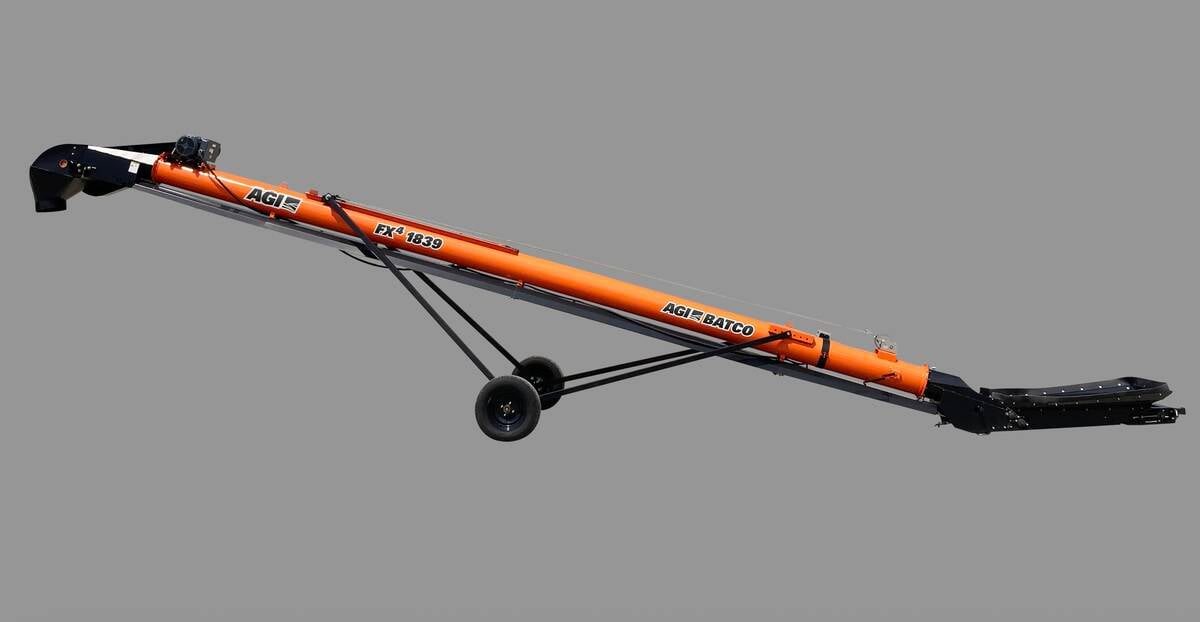After studying the ag supply sectors in my last article, I wanted to take the project a step further to examine companies between the farm gate and the consumer. Like with ag suppliers, my findings are somewhat surprising. I looked at four sectors: grain handling and primary processing, railroads, food manufacturers and food retail, with a representative selection of companies in each sector.
Keep in mind that the doubling of a stock price in a 10-year period is just 7.2 per cent compound annual growth rate using the rule of 72. Adding a two per cent dividend provides a total return of 9.2 per cent, acceptable but not great as an investor.
Grain handling and primary processing
Read Also

AGI rolls out two new high-throughput grain conveyors
For grain growers needing to move a lot of bushels quickly, AGI offers two new high-throughput conveyors: the gas-over-hydraulic FX4 SP, and the top-drive electric FX4 18S.
Much of the grain handling business is privately owned with only three public companies worth looking at. The ROE (return on equity) and ROA (return on assets) of the trailing 12-month period is decent, but cash flow is negative, and not in a small way.
The 10-year profitability numbers are the poorest of any sector in the entire agri-food area. While there has been share price appreciation over the 10-year period, much of that has come in the last couple of years. I owned ADM for a long time but sold after the first wave of commodity price increases. Andersons may not be a familiar name to western Canadian farmers. It is based in the United States with a large presence in Eastern Canada. This sector is volatile with poor financial metrics and something I will steer clear of in the future.
Railroads
Like banks, agriculture isn’t a huge part of the railroading business, but rail is critical to agriculture. The Canadian Pacific Railway (CP) and the Canadian National Railway (CNR) are familiar names and I added U.S.-based Union Pacific to the mix. Please note that CP’s trailing 12-month numbers may not be representative because of a large acquisition. I own all three of these companies with the reason evident from the chart below. They all have excellent financial metrics, the best of any sector studied, and have experienced significant share price appreciation. They are consistent from year to year.
Food manufacturing
There are a lot of companies involved in this sector. I selected names I was familiar with even though I don’t own any of them except options related to PepsiCo. I included a couple of well-known meat processors, Maple Leaf Foods and Tyson. Financial performance in this sector is all over the map. Kraft Heinz is weak and Maple Leaf is modest, whereas General Mills, Tyson and Pepsi are good to excellent. Once again, share price appreciation is demonstrably better for those with high 10-year profitability metrics.
Food retail
This sector has changed dramatically with Costco, Walmart and Amazon biting big chunks out of traditional food retailers. For the purposes of this discussion, I stuck with companies focused on food rather than merchandise.
Three companies dominate the Canadian retail space: Loblaw, Metro and Empire although both Loblaw and Metro expanded into drug retail with the purchase of Shoppers and Jean Coutu, respectively. I added Kroger, the largest traditional U.S. retailer for comparison.
Surprisingly, there are only two dominant traditional food retailers in the United States. The surviving companies in this category are decently profitable despite encroachment from non-traditional food retail. Share price appreciation has been good although Loblaw has largely come from the latest 18 months. In my view, Loblaw’s long-term financials don’t justify the current valuation. I own a small amount of Metro.
My conclusions
Like the previous article, the best sector in my view is the one with the least exposure to food. The last time it was banks and this time railroads. Food manufacturing and retail have merit from an investment standpoint if the right companies are selected. Interestingly, the most profitable food company studied, Pepsi, is in the non-essential snack food and soft drink business.
I leave you with the rhetorical question in the title, “Who is making the big bucks?”
















